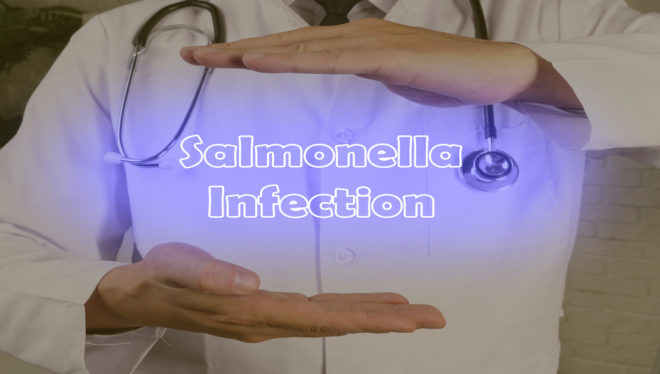Welcome to Safe Food Mitra
Welcome to Safe Food Mitra

| FOOD ADDITIVES DERIVED FROM ANIMAL PRODUCTS (listed by number) |
||
| CODE | ADDITIVE | DESCRIPTION |
| 120 | Cochineal | A natural red colour derived from the bodies of pregnant scale insects. |
| 441 | Gelatine | A thickening, stabilising emulsifying agent made by boiling animal (usually cattle or pigs) skin, ligaments, bones, sinews or other tissue. |
| 469 | Sodium Caseinate | An emulsifier, stabiliser & binder, derived from cow’s milk. |
| 542 | Bone Phosphate | An anti-caking agent made from the degreased steam-extract from animal bones. |
| 901 | Beeswax (white & yellow) | A glazing and polishing agent made from bee honeycomb. |
| 904 | Shellac | Glazing agent obtained from the resin produced by the lac insect. |
| FOOD ADDITIVES THAT MAY BE DERIVED FROM ANIMAL PRODUCTS (listed by number) |
||
| CODE | ADDITIVE | COMMENTS |
| 153 | Carbon Black | |
| 160a | Alpha-, Beta-, Gamma- Carotene | May be held in gelatine matrix. |
| 161g | Canthaxanthin | |
| 252 | Potassium Nitrate | |
| 270 | Lactic Acid | Lactic acid is bitter-tasting acid that forms when certain bacteria combine with lactose (milk or sugar). It is used to impart a tart flavour, as well as in the preservation of some foods. It occurs naturally in the souring of milk and can be found in foods such as cheese (used in coagulation) and yogurt. It’s also used in the production of acid-fermented foods such as pickles and sauerkraut. |
| 322 | Lecithin | An emulsifier (which allows water & oils to mix); is mostly derived from soy beans, seeds, peanuts and maize. Although it may be derived from eggs, in this form it is declared as ‘egg yolk’ and not as ‘322’. |
| 325 | Sodium Lactate | A derivative of lactic acid. |
| 326 | Potassium Lactate | A derivative of lactic acid. |
| 327 | Calcium Lactate | A derivative of lactic acid. |
| 328 | Ammonium Lactate | A derivative of lactic acid. |
| 329 | Magnesium Lactate | A derivative of lactic acid. |
| 422 | Glycerol/Glycerin | May be produced from animal fats, synthesised from propylene or from fermentation of sugars. |
| 430 | Polyoxyethylene (8) Stearate | |
| 431 | Polyoxyethylene (40) Stearate | |
| 432 | Polyoxyethylene (20) Sorbitan Monolaurate or Polysorbate 20 | |
| 433 | Polyoxyethylene (20) Sorbitan Mono-Oleate or Polysorbate 80 | |
| 434 | Polyoxyethylene (20) Sorbitan Monopalmitate | |
| 435 | Polyoxyethylene (20) Sorbitan Monostearate or Polysorbate 60 | |
| 436 | Polyoxyethylene (20) Sorbitan Tristearate or Polysorbate 65 | |
| 442 | Ammonium Phosphatides | |
| 470a | Sodium, Potassium and Calcium Salts of Fatty Acids | |
| 470b | Magnesium Stearate | |
| 471 | Mono- and Di-Glycerides of Fatty Acids | |
| 472a | Acetic & Fatty Esters of Glycerol | |
| 472b | Lactic & Fatty Acid Esters of Glycerol | |
| 472c | Citric & Fatty Acid Esters of Glycerol | |
| 472d | Tartaric & Fatty Acid Esters of Glycerol | |
| 472e | Di-Acetyl Tartaric & Fatty Acid Esters of Glycerol | |
| 472f | Mixed Acetic and Tartaric Acid Esters of Mono- and Di-Glycerides of Fatty Acids | |
| 473 | Sucrose Esters of Fatty Acids | |
| 474 | Sucroglycerides | |
| 475 | Polyglycerol Esters of Fatty Acids | |
| 476 | Polyglycerol Esters of Interesterified Ricinoleic Acid | |
| 477 | Propylene Glycol Mono- and Di-Esters | |
| 478 | Lactylated Fatty Acid Esters of Glycerol and Propane-1,2 Diol | |
| 479b | Thermally Oxidised Soya Bean Oil Interacted With Mono- and Di-Glycerides of Fatty Acids | |
| 481 | Sodium Oleyl or Stearoyl Lactylate | |
| 482 | Calcium Oleyl or Stearoyl Lactylate | |
| 483 | Stearyl Tartrate | |
| 491 | Sorbitan Monostearate | |
| 492 | Sorbitan Tristearate | |
| 493 | Sorbitan Monolaurate | |
| 494 | Sorbitan Mono-Oleate | |
| 495 | Sorbitan Monopalmitate | |
| 570 | Stearic Acid | |
| 572 | Magnesium Stearate | |
| 585 | Ferrous Lactate | |
| 627 | Disodium 5′-Guanylate | A flavour enhancer, isolated from sardines or yeast extract. |
| 630 | Inosinic Acid | |
| 631 | Disodium Inosinate | A flavour enhancer, often prepared from meat extract and dried sardines. It can also be a synthetic product made via a microbial synthesis process that begins with a vegetable source. |
| 635 | Sodium 5′-Ribonucleotides | Flavour enhancer. |
| 640 | Glycine and its Sodium Salt | |
| 910 | L-Cysteine | A flour treatment agent that can be extracted from duck and chicken feathers. |
| 920 | L-Cysteine Monohydrochloride | L-Cysteine is a flour treatment agent that can be extracted from duck and chicken feathers. |
| 921 | L-Cysteine Hydrochloride Monohydrate | L-Cysteine is a flour treatment agent that can be extracted from duck and chicken feathers. |
| 966 | Lactitol | |
| 1518 | Glycerol Mono-, Di- and Tri-Acetate or Tracetin |
| FOOD ADDITIVES DERIVED FROM ANIMAL PRODUCTS (listed by name) |
||
| ADDITIVE | CODE | DESCRIPTION |
| Beeswax (white & yellow) | 901 | A glazing and polishing agent made from bee honeycomb. |
| Bone Phosphate | 542 | An anti-caking agent made from the degreased steam-extract from animal bones. |
| Cochineal | 120 | A natural red colour derived from the bodies of pregnant scale insects. |
| Gelatine | 441 | A thickening, stabilising emulsifying agent made by boiling animal (usually cattle or pigs) skin, ligaments, bones, sinews or other tissue. |
| Shellac | 904 | Glazing agent obtained from the lac insect. |
| Sodium Caseinate | 469 | An emulsifier, stabiliser & binder, derived from cow’s milk. |
| FOOD ADDITIVES THAT MAY BE DERIVED FROM ANIMAL PRODUCTS (listed by name) |
||
| ADDITIVE | CODE | COMMENTS |
| Acetic & Fatty Esters of Glycerol | 472a | |
| Alpha-Carotene | 160a | May be held in gelatine matrix. |
| Ammonium Lactate | 328 | A derivative of lactic acid. |
| Ammonium Phosphatides | 442 | |
| Beta-Carotene | 160a | May be held in gelatine matrix. |
| Calcium Oleyl | 482 | |
| Calcium Lactate | 327 | A derivative of lactic acid. |
| Canthaxanthin | 161g | |
| Carbon Black | 153 | |
| Citric & Fatty Acid Esters of Glycerol | 472c | |
| Di-Acetyl Tartaric & Fatty Acid Esters of Glycerol | 472e | |
| Disodium 5′-Guanylate | 627 | A flavour enhancer, isolated from sardines or yeast extract. |
| Disodium Inosinate | 631 | A flavour enhancer, often prepared from meat extract and dried sardines. It can also be a synthetic product made via a microbial synthesis process that begins with a vegetable source. |
| Ferrous Lactate | 585 | |
| Gamma-Carotene | 160a | May be held in gelatine matrix. |
| Glycerol/Glycerin | 422 | May be produced from animal fats, synthesised from propylene or from fermentation of sugars. |
| Glycerol Di-Acetate | 1518 | |
| Glycerol Mono-Acetate | 1518 | |
| Glycerol Tri-Acetate | 1518 | |
| Glycine and its Sodium Salt | 640 | |
| Inosinic Acid | 630 | |
| Lactitol | 966 | |
| Lactic Acid | 270 | Lactic acid is bitter-tasting acid that forms when certain bacteria combine with lactose (milk or sugar). It is used to impart a tart flavour, as well as in the preservation of some foods. It occurs naturally in the souring of milk and can be found in foods such as cheese (used in coagulation) and yogurt. It’s also used in the production of acid-fermented foods such as pickles and sauerkraut. |
| Lactic & Fatty Acid Esters of Glycerol | 472b | |
| Lactylated Fatty Acid Esters of Glycerol | 478 | |
| L-Cysteine | 910 | A flour treatment agent that can be extracted from duck and chicken feathers. |
| L-Cysteine Monohydrochloride | 920 | L-Cysteine is a flour treatment agent that can be extracted from duck and chicken feathers. |
| L-Cysteine Hydrochloride Monohydrate | 921 | L-Cysteine is a flour treatment agent that can be extracted from duck and chicken feathers. |
| Lecithin | 322 | An emulsifier (which allows water & oils to mix), is mostly derived from soy beans, seeds, peanuts and maize. Although it may be derived from eggs, in this form it is declared as ‘egg yolk’ and not as ‘322’. |
| Magnesium Lactate | 329 | A derivative of lactic acid. |
| Magnesium Stearate | 470b,572 | |
| Mixed Acetic and Tartaric Acid Esters of Mono- and Di-Glycerides of Fatty Acids | 472f | |
| Mono- and Di-Glycerides of Fatty Acids | 471 | |
| Polyglycerol Esters of Fatty Acids | 475 | |
| Polyglycerol Esters of Interesterified Ricinoleic Acid | 476 | |
| Potassium Lactate | 326 | A derivative of lactic acid. |
| Potassium Nitrate | 252 | |
| Polyoxyethylene (20) Sorbitan Monolaurate | 432 | |
| Polyoxyethylene (20) Sorbitan Mono-Oleate | 433 | |
| Polyoxyethylene (20) Sorbitan Monopalmitate | 434 | |
| Polyoxyethylene (20) Sorbitan Monostearate | 435 | |
| Polyoxyethylene (20) Sorbitan Tristearate | 436 | |
| Polyoxyethylene (8) Stearate | 430 | |
| Polyoxyethylene (40) Stearate | 431 | |
| Polysorbate 20 | 432 | |
| Polysorbate 60 | 435 | |
| Polysorbate 65 | 436 | |
| Polysorbate 80 | 433 | |
| Propane-1,2 Diol | 478 | |
| Propylene Glycol Mono- and Di-Esters | 477 | |
| Sodium 5′-Ribonucleotides | 635 | Flavour enhancer. |
| Sodium Lactate | 325 | |
| Sodium Oleyl | 481 | A derivative of lactic acid. |
| Sodium, Potassium and Calcium Salts of Fatty Acids | 470a | |
| Sorbitan Monolaurate | 493 | |
| Sorbitan Mono-Oleate | 494 | |
| Sorbitan Monopalmitate | 495 | |
| Sorbitan Monostearate | 491 | |
| Sorbitan Tristearate | 492 | |
| Stearoyl Lactylate | 481, 482 | A derivative of lactic acid. |
| Stearyl Tartrate | 483 | |
| Sucroglycerides | 474 | |
| Sucrose Esters of Fatty Acids | 473 | |
| Stearic Acid | 570 | |
| Tartaric & Fatty Acid Esters of Glycerol | 472d | |
| Thermally Oxidised Soya Bean Oil Interacted With Mono- and Di-Glycerides of Fatty Acids | 479b |

Researchers have assessed the potential reasons behind a decrease in Salmonella infections in the Netherlands during the COVID-19 pandemic.
VNV
Populars Courses

